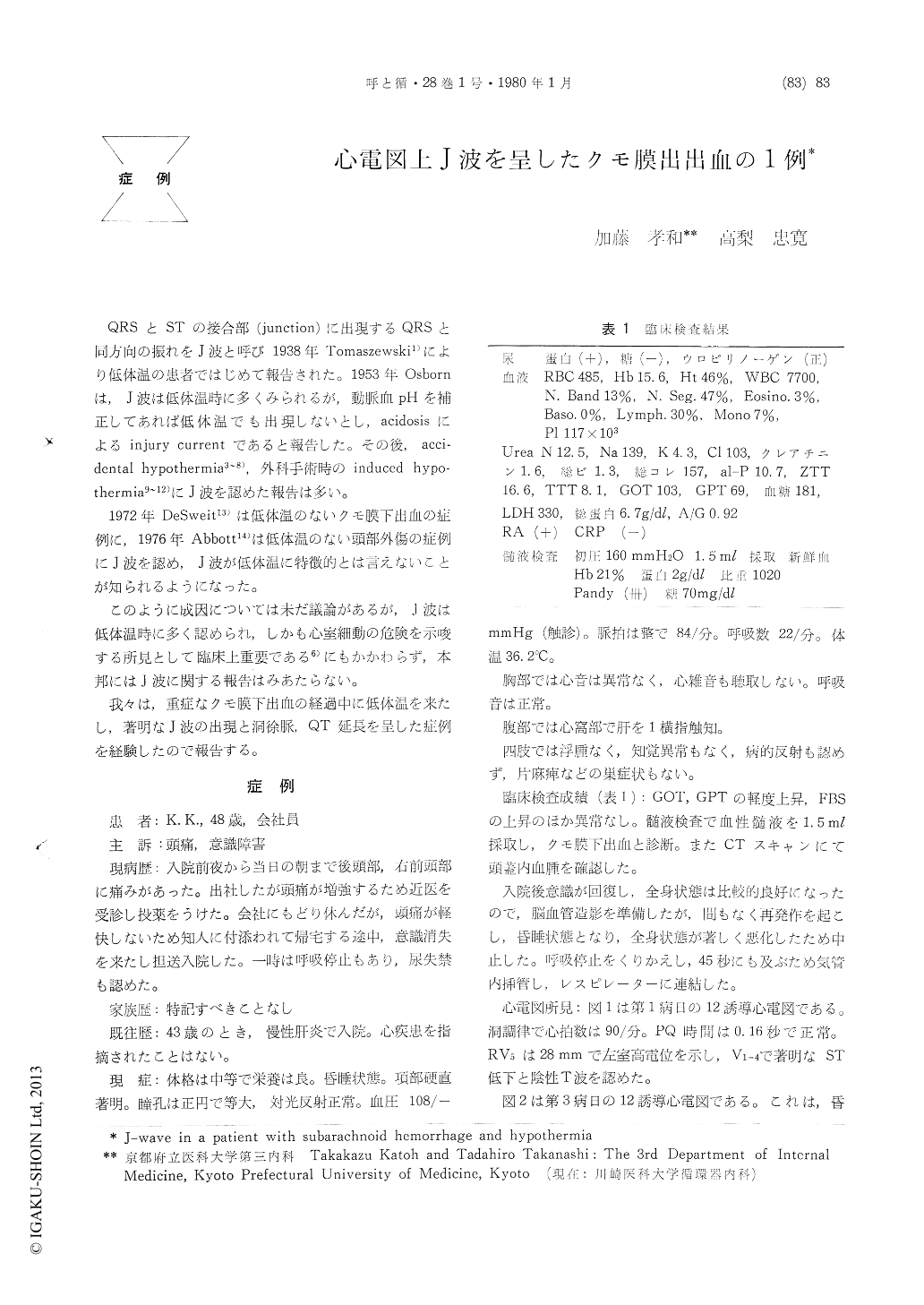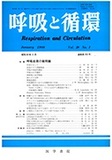Japanese
English
- 有料閲覧
- Abstract 文献概要
- 1ページ目 Look Inside
QRSとSTの接合部(junction)に出現するQRSと同方向の振れをJ波と呼び1938年Tomaszewski1)により低体温の患者ではじめて報告された。1953年Osbornは,J波は低体温時に多くみられるが,動脈血pHを補正してあれば低体温でも出現しないとし,acidosisによるinjury currentであると報告した。その後,acci—dental hypothermia3〜8),外科手術時のinduced hypo—therrnia9〜12)にJ波を認めた報告は多い。
1972年DeSweit13)は低体温のないクモ膜下出血の症例に,1976年Abbott14)は低体温のない頭部外傷の症例にJ波を認め,J波が低体温に特徴的とは言えないことが知られるようになった。
A 48-year-old man with subarachnoid hemor-rhage, whose electrocardiogram (ECG) showed prominent J-wave as well as marked sinus bradycardia and QT prolongation, was reported. Intense headache, unconsciousness, nuchal rigidity, no evidence of focal sign and bloody spinal fluidsuggested subarachnoid hemorrhage, which was established by CT scan.
On the first hospital day, his blood pressure, pulse rate, body temperature and respiration were all within normal range, and his ECG revealed normal sinus rhythm and ST-segment depression as well as mild left ventricular high voltage. Although his consciousness was recovered after the admission, second attack occurred in the evening of the first hospital day. He became comatous again and artificial respirator was used because of frequent respiratory arrests.

Copyright © 1980, Igaku-Shoin Ltd. All rights reserved.


